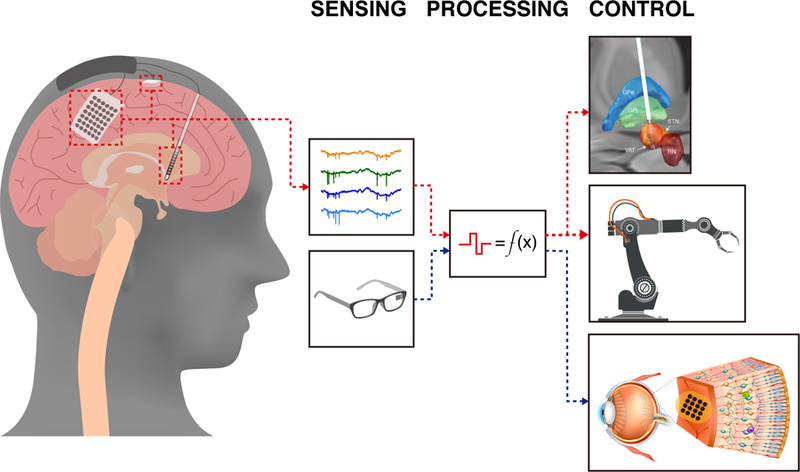Figure 1:

Unidirectional and bidirectional neurostimulation approaches. To date, the vast majority of commercially available neurostimulation devices are unidirectional capable of singularly recording or stimulating. For example, unidirectional recording devices (red dashed-line) like the motor cortical prosthetics decode motor intention from motor cortical networks to actuate a robotic arm and restore movement12,13. Similarly, unidirectional stimulation devices (blue dashed-line), such as retinal prosthetics map visual-spatial information from cameras to create visual percepts by stimulating retinal receptive fields15,16. Bidirectional neurostimulation devices are capable of both sensing and stimulating in a real-time and adaptive manner, thus creating new opportunities leveraging closed-loop approaches.
